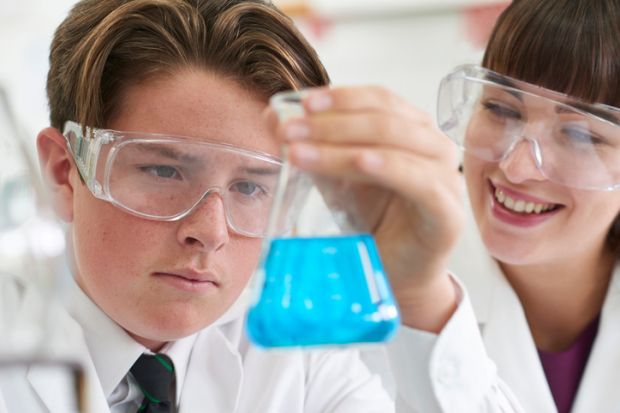Australia’s government may use its funding clout to compel universities to train more specialist maths and science teachers, under plans outlined on 9 July.
Federal education minister Simon Birmingham has flagged the possibility that universities could lose revenue if they do not help stem a dramatic drop-off in science, technology, engineering and mathematics study at high school.
The remarks could represent the latest attempt to compromise universities’ autonomy over their education programmes, following New South Wales and Victorian government moves to enforce minimum entry standards for trainee teachers.
Government reforms have also forced would-be primary school teachers to undertake specialist training in areas like maths, science, technology or languages.
The federal government believes a lack of specialist teachers is responsible for a decline in secondary school STEM, with barely half of students enrolling in science subjects and one in three taking intermediate or advanced maths.
Many high schools have no maths or science graduates on staff, forcing them to rely on non-specialist teachers. Citing 2013 figures, the government said around one in five general science teachers had not completed a year’s tertiary study in science.
In a prepared speech to the national conference of the Australian Science Teachers’ Association at the University of Sydney, Mr Birmingham said this was “unacceptable”. He said that the government intends to redress the problem within the next five to 10 years.
“The states should be willing to make clear to universities where their employment priorities lie, and create direct incentives for more people to consider specialising in physics, chemistry, biology, technology or maths,” Mr Birmingham said.
“If need be, federal funding powers over university places could be used to influence enrolment to secure the science teachers we need for the future.”
Mr Birmingham told the ABC that funding agreements left universities with “great degrees of autonomy”.
“I’m sure that that’s the way it will stay in the future,” he said. “But if we didn’t see the type of focus on training the future teachers we need, there would be those levers that the government could use.”
The Australian Mathematical Sciences Institute said at least 26 per cent of teachers of maths classes in the first four years of high school were not fully qualified. It said the proportion rose to at least 40 per cent in regional Australia, compared to a global average of 12 per cent.
AMSI director Geoff Prince said he supported government influence on the composition of universities’ teaching graduates, as “part of an agreed and comprehensive teacher workforce strategy”.
“This should include professional development for the current out-of-field teachers,” Professor Prince said. “Recruiting new graduates alone will not solve the shortage on any acceptable timescale.”
He said the maths and science teaching problems had developed in a government “policy vacuum” exacerbated by a lack of data about graduation rates and out-of-field teaching. “The solution lies with an evidence-based teacher workforce strategy and I’m sure the universities will naturally play a significant role in its development and implementation.”
The federal government said it wanted a new workforce development strategy to be part of a school reform agreement to be negotiated this year with the six states and two territories.
Register to continue
Why register?
- Registration is free and only takes a moment
- Once registered, you can read 3 articles a month
- Sign up for our newsletter
Subscribe
Or subscribe for unlimited access to:
- Unlimited access to news, views, insights & reviews
- Digital editions
- Digital access to THE’s university and college rankings analysis
Already registered or a current subscriber? Login








